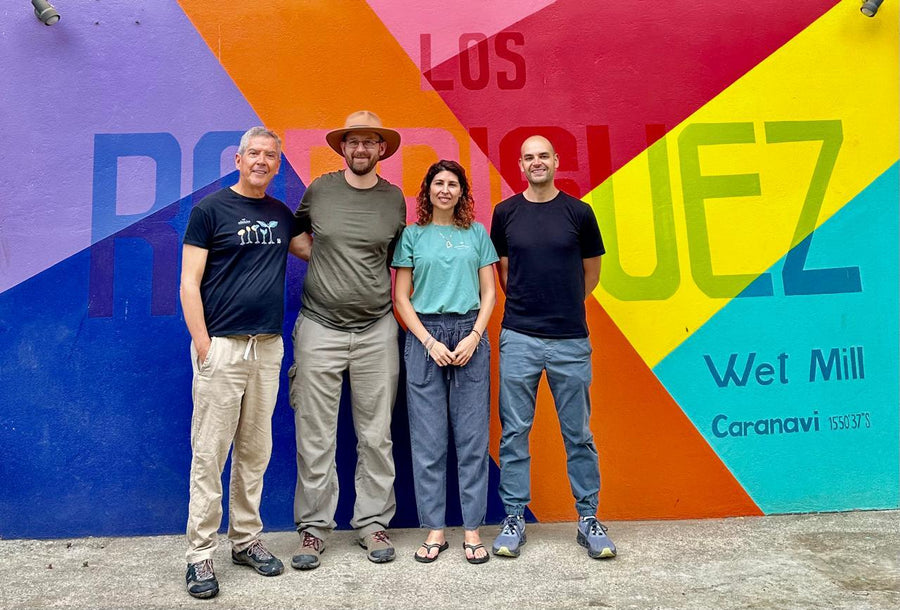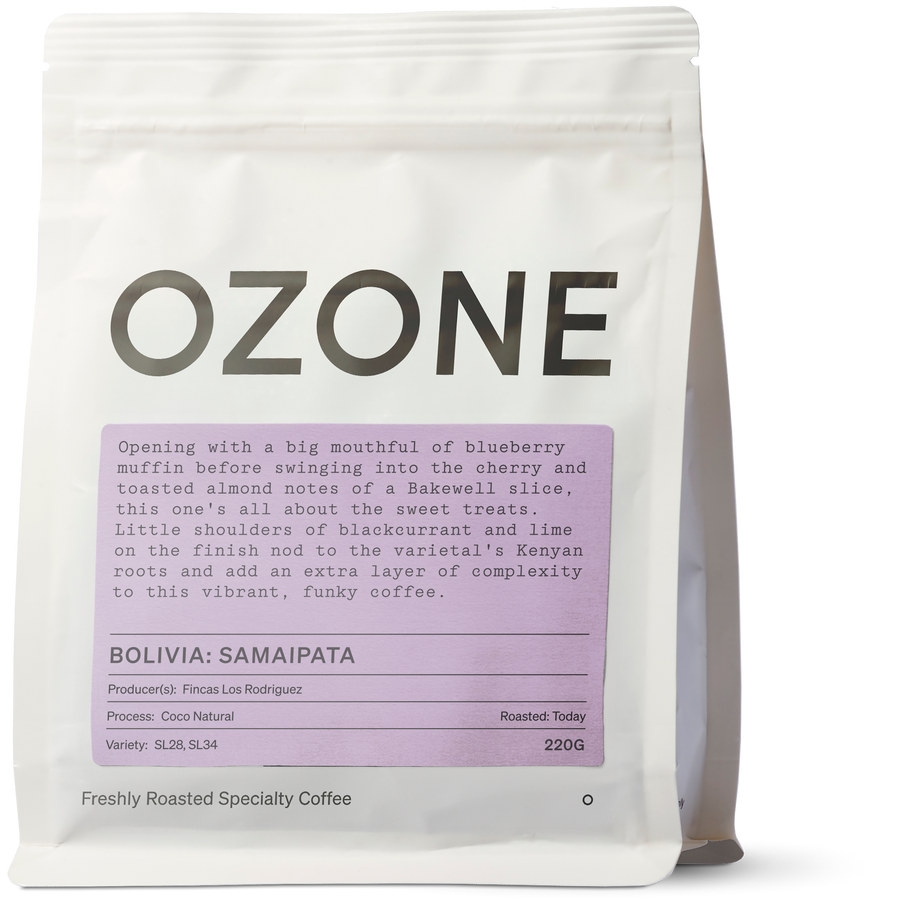
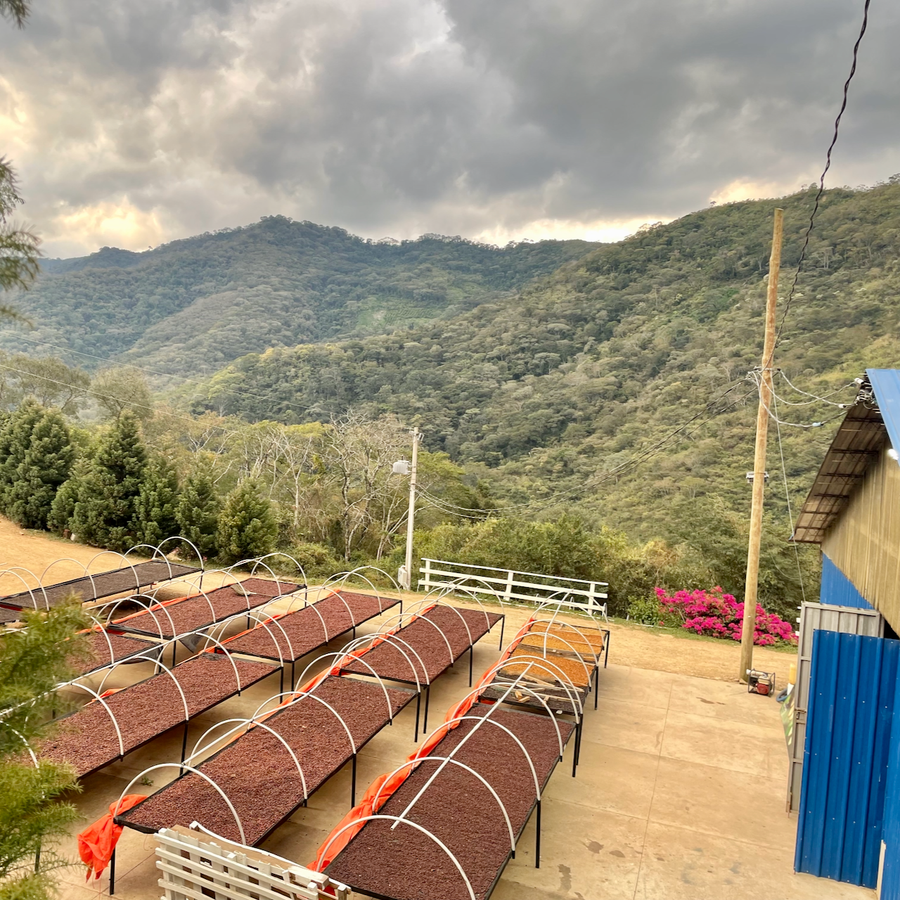

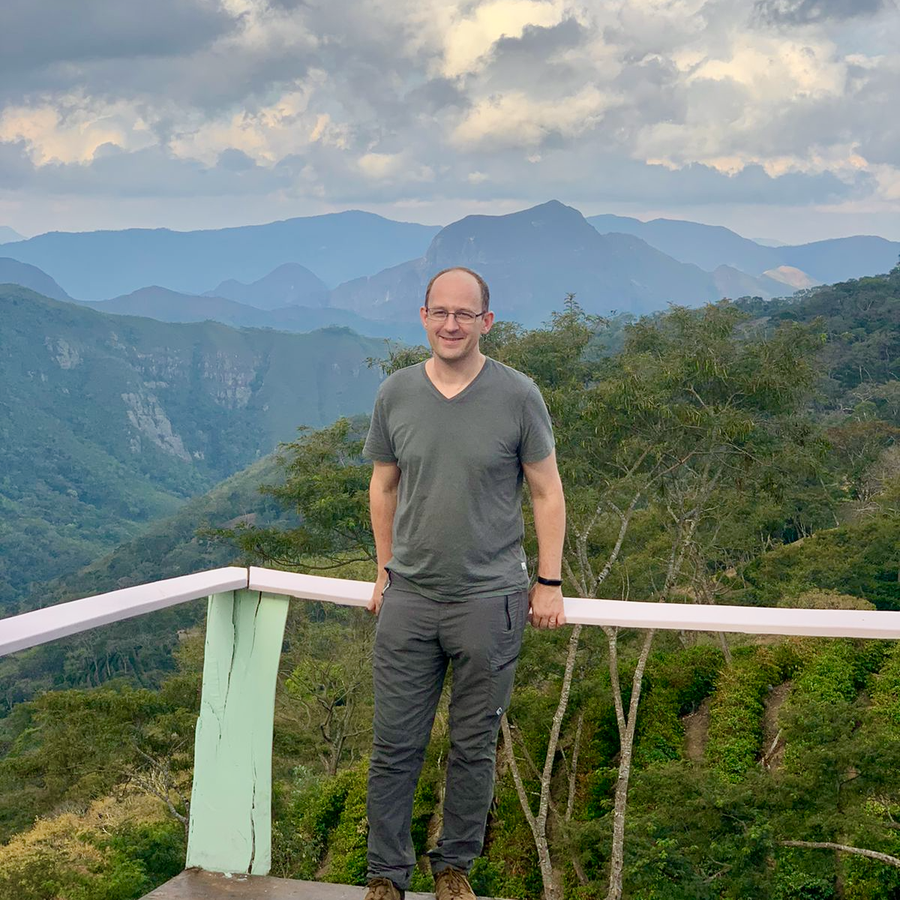
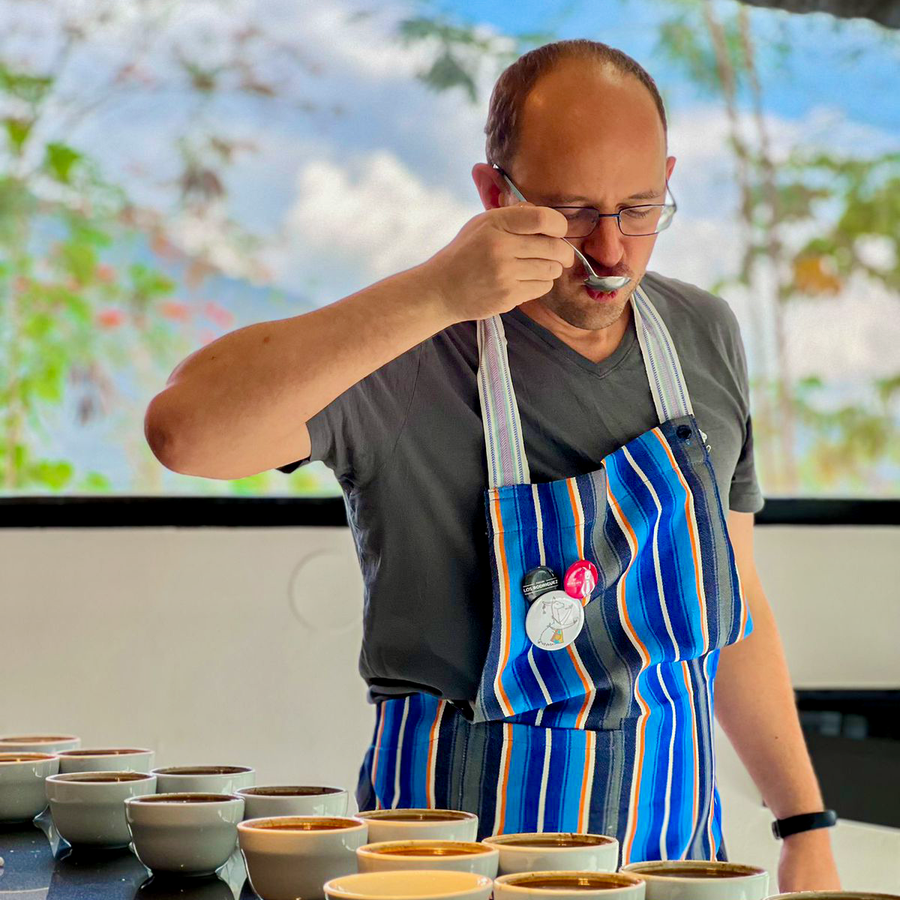
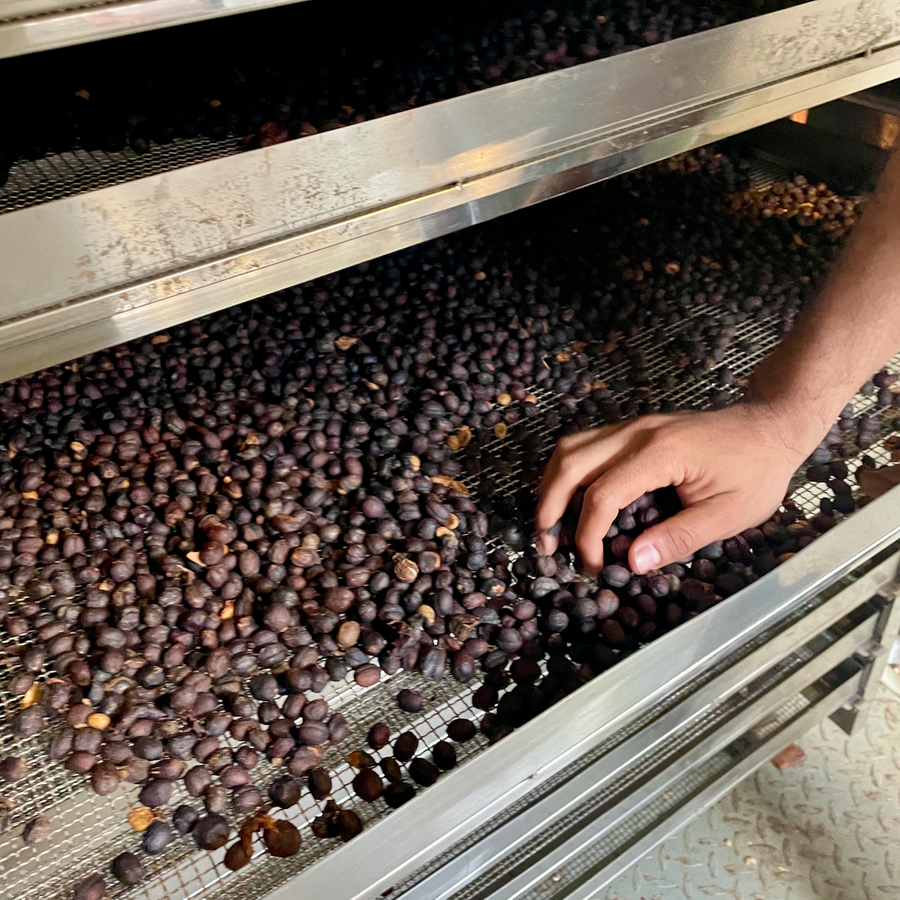
Bolivia: Samaipata
Fincas Los Rodriguez
-
This is the only coffee we’ve got this year from Bolivia’s Samaipata region, and we’re really glad we do. The 2024 harvest wasn’t the easiest for the Los Rodriguez farms in that area, so they decided to bring together small pickings of SL28 and SL34 from across their plots and process them as a Natural.
The Region of Samaipata
The name Samaipata comes from the Quechua words samay, meaning “to rest,” and pata, meaning “elevated place” or “top bank of a river.” Samaipata isn’t a traditional coffee-growing region, it’s actually better known for its vineyards, but it’s one that the Rodríguez family has helped pioneer for specialty coffee. The climate here is classified as subtropical highland: temperate and semi-dry in the winter months, with an average annual temperature of 19.9°C. During winter, cold southern winds known as Surazos blow in from the Argentine Pampas and sweep through the valleys of Santa Cruz. Combined with the altitude, these fronts can push temperatures below freezing.
In summer, warm days and cool nights create a wide diurnal temperature range, which slows down cherry ripening and leads to a thicker layer of mucilage on the fruit, an important factor in flavour development. The local soil is rich in magnesium, which supports healthy plant growth and helps protect coffee trees from leaf rust (roya) and other fungal diseases. Together, these conditions create a growing environment that’s quite different from Bolivia’s traditional coffee regions, contributing to a flavour profile that’s unique to Samaipata.
Kenyan Varietals, Bolivian Terroir
The varieties in this lot, SL28 and SL34, originally come from Kenya, where they were developed in the 1930s by Scott Agricultural Laboratories. SL28 is known for its juicy, tropical fruit notes and drought resistance, while SL34 tends to have a fuller body and a more chocolatey, citrusy profile. Both are loved for their complexity and sweetness, but they’re also a bit fragile when it comes to disease. In Kenya, they’re usually grown at high altitudes and processed using the washed method, which brings out their bright acidity and berry-like flavours.
In Bolivia, though, things are a little different, thanks to the Samaipatan cooler climate and unique soil conditions we mentioned earlier. You still get the vibrant acidity and sweetness they’re known for, but with a softer, rounder edge. The natural processing also plays a big role here, adding extra layers of fruitiness and texture that you wouldn’t typically find in a washed Kenyan SL lot. It’s a great example of how the same varieties can take on a whole new personality depending on where and how they’re grown.
Innovative "Coco Natural" Processing
This lot was processed using what the Rodriguez family call the “Coco Natural” method, a name they came up with themselves. It’s a small-batch approach to Natural processing that starts with picking only the ripest cherries, checked by colour and sugar content. After picking, the cherries are sorted by density using water and then disinfected in a high-capacity machine the Rodríguez family affectionately call ‘La Maravilla’, Spanish for ‘the wonder’, a name that reflects just how efficient and reliable it is during peak harvest. After that, they’re laid out on patios to dry for 48 to 72 hours, depending on the weather. This initial drying stage helps kick off fermentation and gives the cherries a head start before they’re moved into the next phase.
From there, the cherries go into what the team at Buena Vista refer to as “stationary box” dryers, also known as Coco dryers. These are large steel containers with warm air gently flowing up from beneath the coffee bed. The temperature stays below 40°C, and the coffee is stirred manually at regular intervals to make sure it dries evenly. Over the course of 40 to 50 hours, the cherries slowly dry down to a stable 11.5% humidity. As they dry, they turn a deep reddish-brown, a bit like cocoa powder, which is where the “Coco” nickname comes from. It’s a thoughtful, hands-on process that brings out loads of fruit character while keeping the flavours clean and balanced.
Opening with a big mouthful of blueberry muffin before swinging into the cherry and toasted almond notes of a Bakewell slice, this one's all about the sweet treats. Little shoulders of blackcurrant and lime on the finish nod to the varietal's Kenyan roots and add an extra layer of complexity to this vibrant, funky coffee.
-
- Country: Bolivia
- Department: Santa Cruz
- Province: Florida
- Region: Samaipata
- Farms: Los Rogriguez Farms of Samaipata
- Producers: Fincas Los Rodriguez
- Processing Method: Coco Natural
- Varietal: SL28 and SL34
-
Tasting notes: Blueberry, almond, cherry, blackcurrant, lime.
Cup of Excellence Cupping Scores
- Clean cup: (1–8): 6.5
- Sweetness: (1–8): 7
- Acidity: (1–8): 6.5
- Mouthfeel: (1–8): 6.5
- Flavour: (1–8): 7
- Aftertaste: (1–8): 6
- Balance: (1–8): 6
- Overall: (1–8): 6.5
- Correction: (+36): +36
- Total: (max. 100): 88
Roasting Information
Medium: through first crack and most of the way up to second, but don't let this go too far - it's all about that funky natural processing. -
-
Producer Stories
Learn more about coffee sourcingFincas Los Rodriguez
Fincas Los Rodríguez is a family-run coffee project led by Pedro and Daniela Rodriguez, focused on producing high-quality, traceable coffees across twelve farms in Bolivia’s Caranavi and Samaipata regions.
Read more